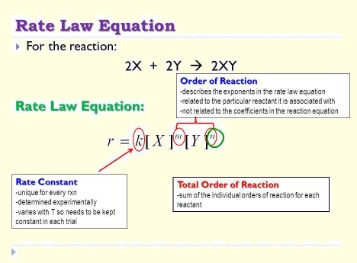Payroll Adjustments: A Guide for Small Business Owners

Rinaily is a renowned expert in the field of human resources with years of industry experience. With a passion for writing high-quality HR content, Rinaily brings a unique perspective to the challenges and opportunities of the modern workplace. As an experienced HR professional and content writer, She has contributed to leading publications in the field of HR. When someone joins the company, we need to register them and prepare a contract. This adjustment can be resolved (almost) automatically so that the new joiner can sign on their first day. As we’ve already mentioned, an adjustment doesn’t have to be a problem.

Notify the employee in writing
In contrast, a year-end bonus is a one-time salary adjustment where you increase your employee’s pay for one period, and then it goes back to normal. It’s only entitled when an employee receives the wrong wages or less than they should have within a pay period. If overtime is miscalculated (which should be paid at a rate of 1.5 hours), then the employer would need to make up the difference in a pay shortfall. This is often, unfortunately, a common albeit unintentional error, where overtime adds up beyond the regular working hours of an employee. Here’s a brief overview of your payroll tax responsibilities as an employer. Withhold taxes from employee wages, contribute employer taxes, and report and remit taxes to the IRS quarterly (using Form 941) what is inventory turnover or annually (using Form 944).
Reasons for implementing pay adjustments
Managing pay adjustments involves navigating several challenges to ensure fairness and effectiveness. As we mentioned earlier, manually adjusting payroll is never effective. Making hand-written notes or using a document on an individual computer is risky. We may often make mistakes when writing down a number, or we may even forget to make adjustments in time for the employee to receive them. It creates extra work for us by having to go back and correct payslips. Any updates to employee contracts, such as a salary increase, must also be reflected in their payslip.
- Staying on top of wage and hour and other employment-related laws is an important part of payroll compliance.
- Lastly, remember to assess the number of affected payroll periods, because this will influence the payable sum owed to an employee.
- Developing and communicating clear policies regarding pay adjustments is crucial for maintaining trust and transparency within the organization.
- These payroll adjustments reward employees for their contributions, fostering a culture of excellence and motivation.
- On the other hand, results-based payments require more precise control to make sure the right amount of money reaches the right people.
Not sure how to address pay transparency?
Good record-keeping practices also support HR managers in managing pay adjustments effectively and maintaining trust within the organization. Conducting regular pay reviews is essential to stay competitive and retain employees. Regular reviews help HR managers evaluate current pay structures, compare them with market rates, and identify necessary salary adjustments. These reviews can prevent pay disparities and ensure that employees’ wages are aligned with their performance and market standards. By staying proactive, companies can make timely payroll adjustments that reflect industry trends and cost-of-living changes. A pay adjustment refers to any change made to an employee’s rate of pay.
Managers play a critical role in providing insights into employee performance and job duties, which are essential for making informed pay adjustments. Involving managers helps in accurately assessing employee contributions and making equitable salary changes. This collaboration also ensures that pay adjustments are consistent with the company’s goals and budget constraints. It can be easy to make errors in processing payroll, especially with manual data entry. Payroll processing software can be a great way to help reduce data entry errors and ensure payroll compliance.
Some changes in benefits can necessitate a compensation adjustment. This can be a gross-up adjustment, for example, to cover the income and payroll taxes owed on the benefit. Payroll adjustments refer to any change you make in an employee’s pay. An adjustment can either be positive (paying more money) or negative (reducing pay). Make sure you’re in line with the Fair Labor Standards Act, which outlines federal requirements for overtime pay, recordkeeping, minimum wage and other standards.
What is a payroll overpayment?
These payroll adjustments reward employees for their contributions, fostering a culture of excellence and motivation. Employers use merit increases to recognize outstanding performance, thereby encouraging other employees to strive for similar success. Cost-of-living adjustments account for inflation and changes in the cost of living.
When an employee is sick, their contract needs an adjustment because part of their salary will be paid by Social Security. Recording the start and end date of their sick leave is vital to ensure what is the average collection period that all the information correctly balances. Incorrect adjustments can lead to an infringement of employment law, as well as creating more work afterwards to put things right.
Our payroll experts can help small and medium-size businesses stay on top of payroll compliance issues. Payroll adjustments must comply with all relevant federal, state and local laws. HR software can be helpful, but having a human resources professional oversee this task can be beneficial. When calculating retro pay, an employer is still responsible for ensuring taxes are paid. Lastly, remember to assess the number of affected payroll periods, because this will influence the payable sum owed to an employee. Although employers get free rein under federal law, some states have stricter rules on correcting payroll overpayments.
Once the top budgeting software 2021 analysis is complete, the next step is to determine the appropriate pay adjustment amount. This involves setting the adjustment based on the analysis results and the company’s business needs. Factors such as the cost of living, market rate, and performance-based achievements should be considered. It’s essential to ensure the adjustment aligns with the federal minimum wage and local minimum wage requirements. Employers must also consider budget constraints while making these adjustments to maintain financial stability. Engaging relevant leadership in the pay adjustment process ensures alignment and fairness.
